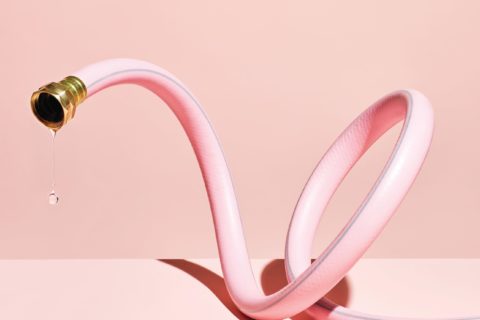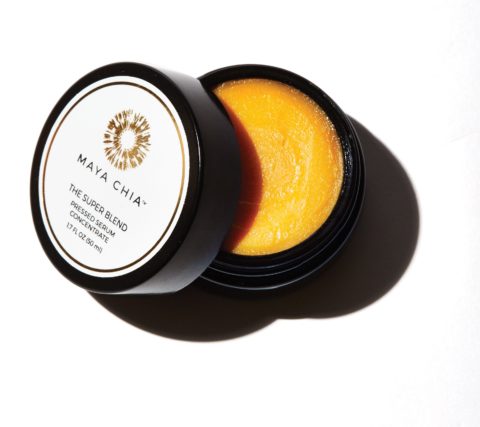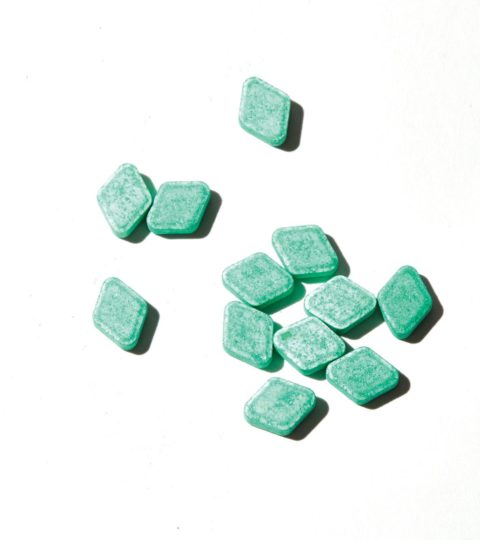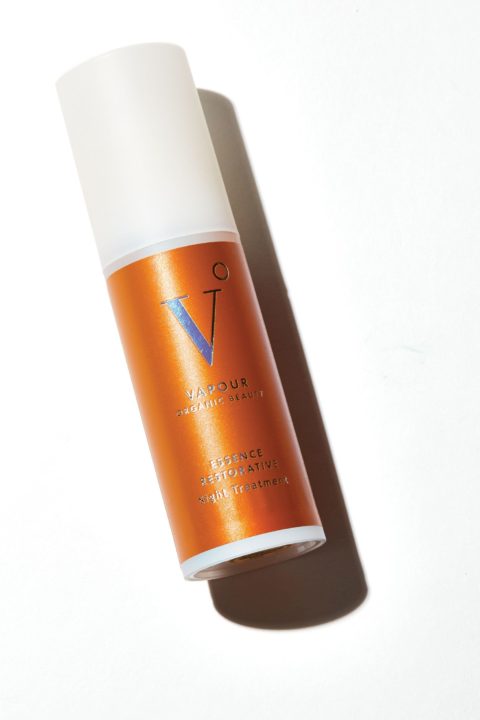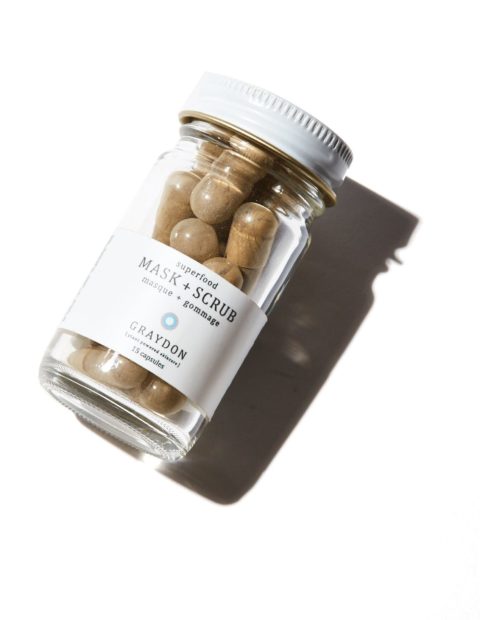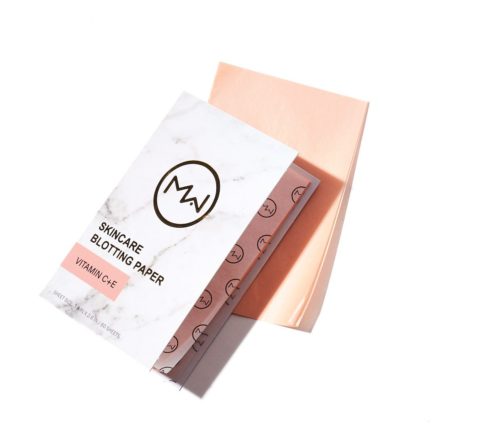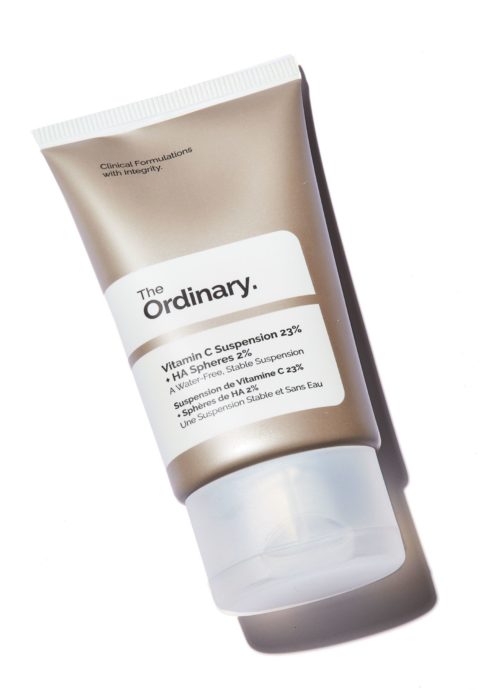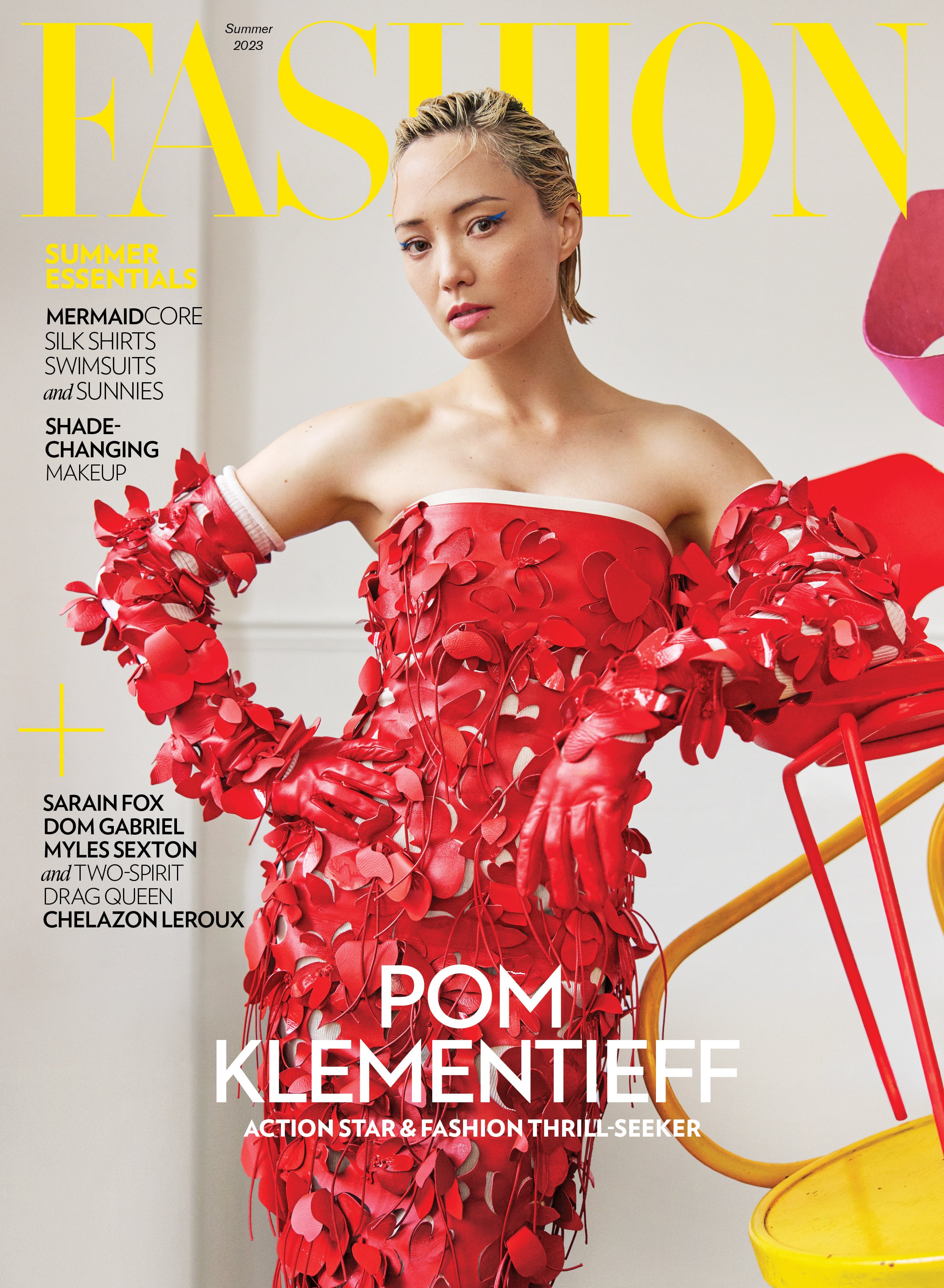Why Waterless Products Are the Future of the Beauty Industry
While visiting Austin, Texas, recently, I spotted a beauty brand I hadn’t seen before, called Stop the Water While Using Me! The German body-care line, which includes everything from shampoo to toothpaste, wears the heart of its mission—to conserve a non-renewable resource—on its recyclable sleeve. Its name cheekily calls out one of the First World’s collective bad habits: leaving the faucet flowing when turning it off could save countless litres of water. The fact that I stumbled upon this brand in a state where droughts are a constant concern isn’t lost on me.
Water and grooming go hand in hand, but the amount of H2O we use while lathering up in the shower or brushing our teeth at the sink is only one part of the story. There’s also the water in our cosmetics. Just scan the back of most skincare products—foundation and mascara, too—and you’ll see it’s usually the first ingredient mentioned, accounting for 70 to 80 per cent of the formula. “Water is a wonderful, universal solvent,” says cosmetics chemist Ni’Kita Wilson to explain why it’s so widely used. “It allows us to put water-soluble ingredients into a formula and helps cut the greasiness and heaviness of some ingredients.” Without it, says Wilson, achieving a “nice, elegant emulsion,” like in a creamy moisturizer or lightweight serum, isn’t possible. Water also helps cosmetics companies cut costs, she adds, because it’s less expensive than alternatives like essential oils.
But according to a report from trend forecasting agency WGSN titled Spotting the Beauty Trends and Markets in 2020, the tide may be turning as awareness grows about different water crises around the globe, including one right here in Canada: the boil-water advisories on many of our First Nations reserves. “Water remains a key area of concern, particularly across Asia, where China’s second most threatening environmental issue continues to be water shortage,” says Theresa Yee, senior beauty editor at WGSN. As a result, “beauty brands are starting to look at processes and ingredients that ensure products limit their dependence on water.”
Often ahead of the curve in formula innovation, South Korean beauty brands like Whamisa, May Coop, The Lotus and Frudia already feature anhydrous products in their lineups, though they’re not necessarily created with the environment in mind. Removing water from the equation frees up space for more botanicals and essential oils, which appeals to ever more discerning consumers with sky-high expectations. “Instead of the base being water, a potent action-packed sap or extract is the top ingredient,” explains Alicia Yoon, founder of Peach & Lily. “This can help deliver higher performance and better results.”
Deciem’s clinical-inspired range The Ordinary features a guide on its website to let customers know whether a product they are browsing is free of things like silicones or water. For instance, its Vitamin C Suspension 23% + HA Spheres 2% comprises L-ascorbic acid, “which remains completely stable due to the absence of water,” says the brand.
Leaving H2O out of the mix offers other benefits, too. While we aspire to gulp down eight glasses of water a day, applying it topically can actually dry out skin; when water is absent, there is no longer a breeding ground for micro-organisms, which means the product will have a longer shelf life without the need to add harsh preservatives like parabens, explains Krysia Boinis, co-founder of Vapour Organic Beauty, an entirely-water-free line that uses oils like camellia seed and organic beeswax instead.
There is also the convenience factor. Consider Mai Couture, created by makeup artist Mai Tran, whose biodegradable blotting papers are infused with everything from foundation (just press a sheet on skin and the pigment transfers to the complexion) to dry versions of ingredients normally reserved for traditional skincare, like blemish-fighting salicylic acid and anti-aging rosehip oil. Then there’s French apothecary brand L’Officine Universelle Buly, whose water-activated Kami soap sheets are much chicer than a pump of hand sanitizer.
Creating a water-free product can also mean addressing another environmental issue that’s just as important as water conservation: plastics and excess packaging, like pump dispensers. Lush was a pioneer in this respect, when it started making massage and shampoo bars in the early ’90s. It has since expanded its line to include everything from solid hand masks to mouthwash. It has also paved the way for brands like New Zealand’s Ethique, a solids-only range featuring 30 different types of bars—including an anti-aging bar made with cupuacu butter and coconut oil and even a self-tanning bar—that are so concentrated they last up to six times longer than their liquid counterparts.
Still, as Wilson points out, creating a formulation without water isn’t straightforward. It means finding different ways to ferry ingredients into skin. And it also requires consumer education to get people comfortable with using and applying products with an unconventional format and consistency.
That’s why we’ll start to see more innovative textures and new delivery methods, says Belinda Carli, director of the Institute of Personal Care Science, who cites freeze-dried ingredients and “moisturizer or serum concentrates to be mixed with water before application” as things we may see in the future. In the meantime, trailblazers like Nannette De Gaspé are already making waves in the industry. Her dry masks harness biomimetic technology to “imprint” ingredients like marine extracts and peptides onto fabric, which, when massaged, releases them into skin.
Boinis says she embraces the challenge of formulating without water and attributes Vapour Organic Beauty’s success so far to the fact that she and her partner don’t have chemistry degrees. “When you have a traditional formulating perspective, it limits your options for what kinds of creative solutions you’re going to come up with,” she says. And for her, there was never any alternative. “We are located in Taos, New Mexico, and water is very precious here in the desert, so it felt very ecologically irresponsible to make products that are 70 per cent water,” she says. And what we’re giving up in H2O we’re gaining in other areas. “There are just so many wins when you remove water from the formula.”

